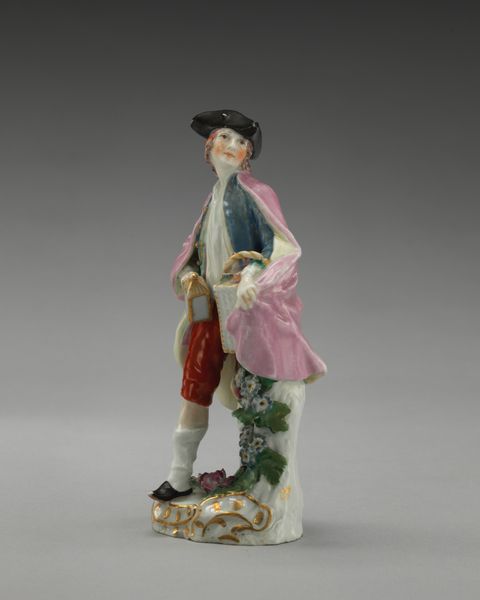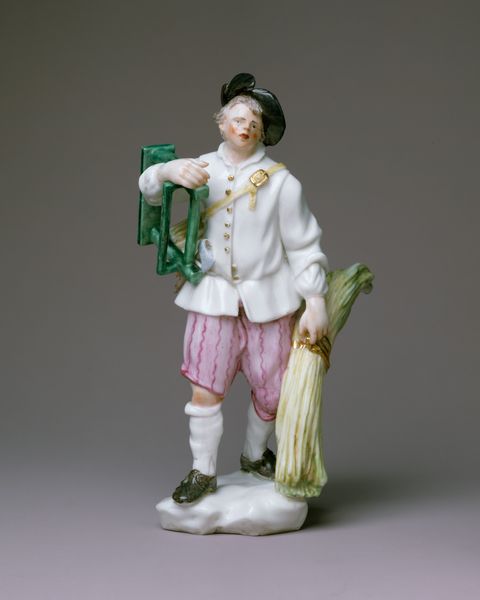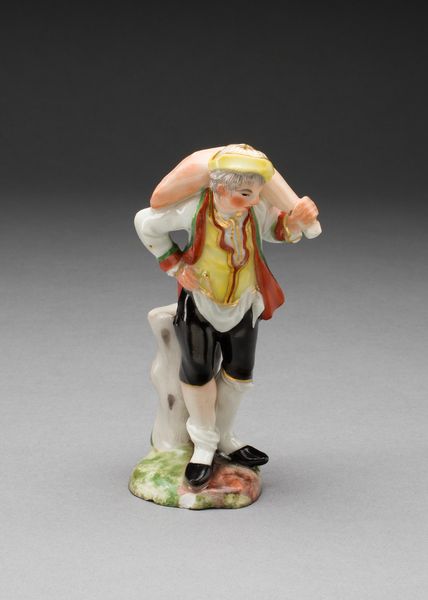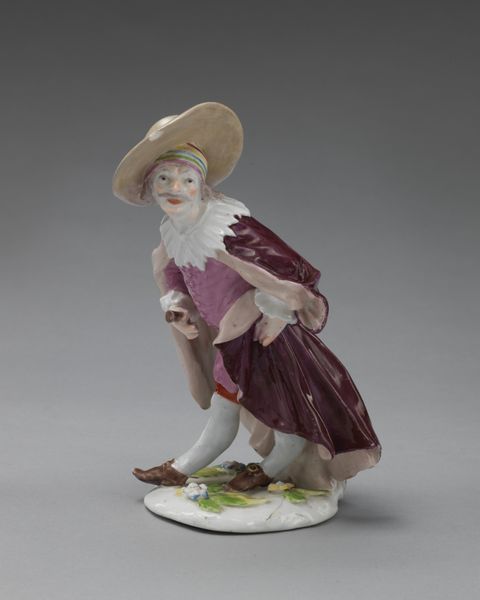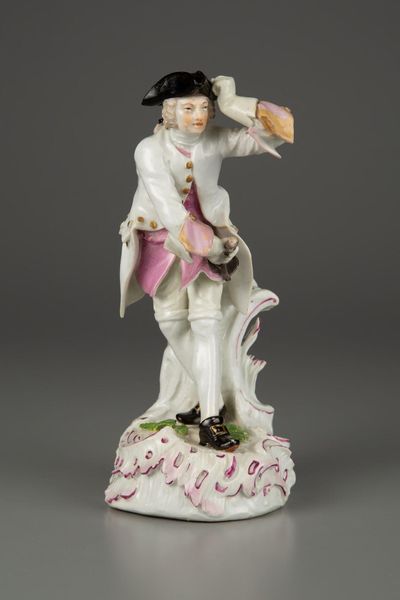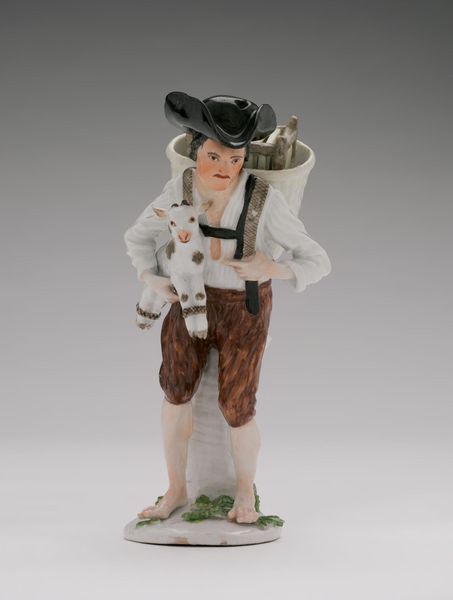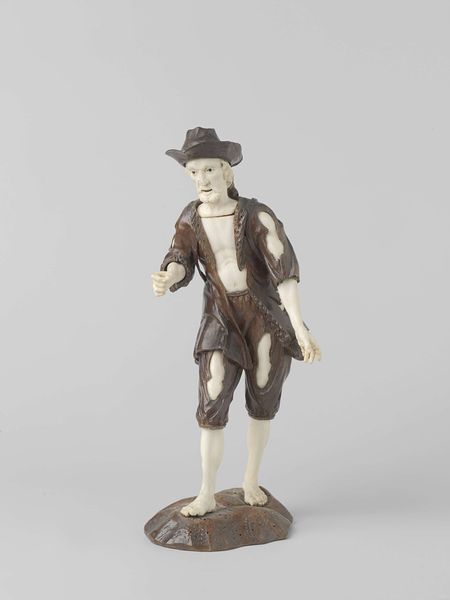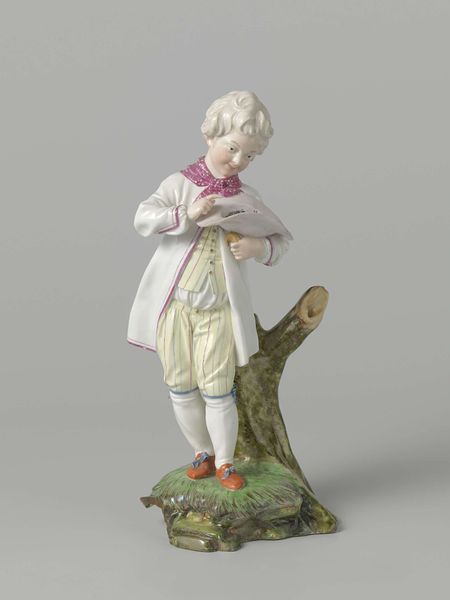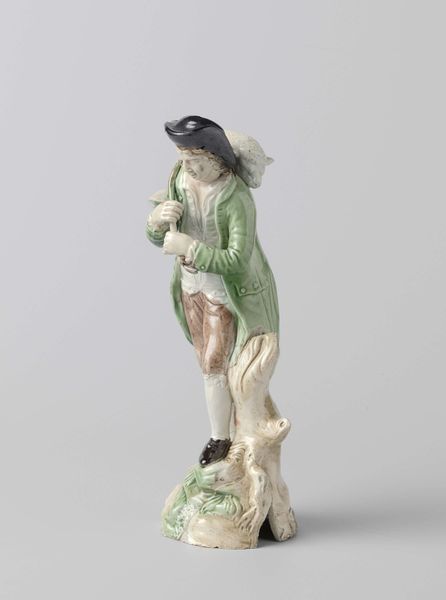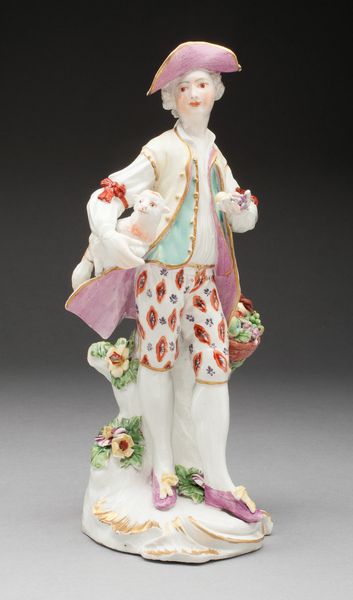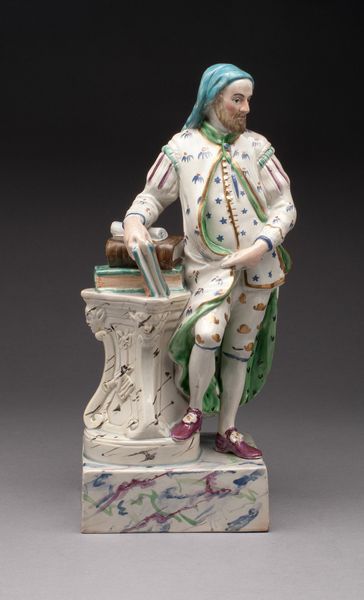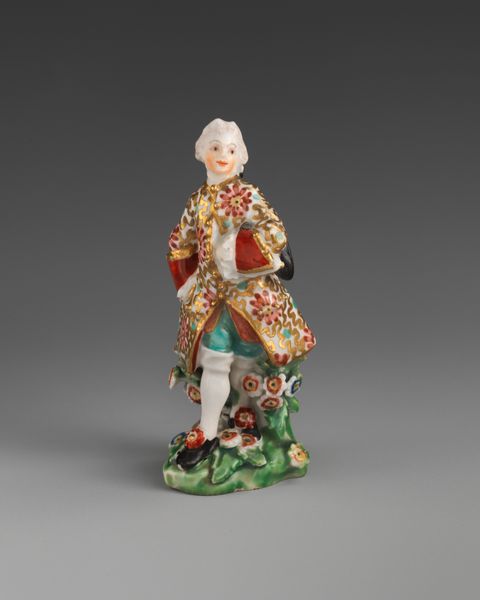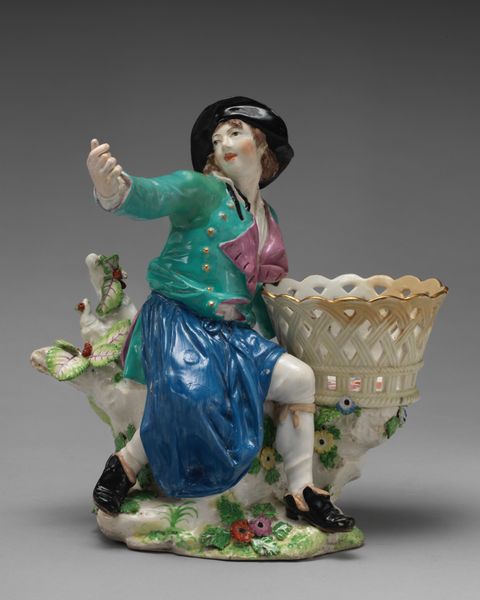
ceramic, porcelain, sculpture
#
baroque
#
ceramic
#
porcelain
#
figuration
#
sculpture
#
genre-painting
#
decorative-art
Dimensions: 7 1/4 × 4 in. (18.4 × 10.2 cm)
Copyright: Public Domain
Editor: Here we have a porcelain sculpture titled "Map Seller," made around 1755-1756 by the Chelsea Porcelain Manufactory. The seller is holding a map that says "America." It feels delicate and ornate, almost like a fancy toy. What strikes you about this piece? Curator: The compelling element is precisely the tension between delicacy and the context of its making. Think about the labor involved in producing porcelain in 18th-century England. This wasn't just about aesthetic expression; it was about material processes, from mining the raw materials to the factory work involved in molding, firing, and painting each figure. Editor: So, you are less focused on what the figure *represents* and more on how it came to *be*? Curator: Absolutely. Consider the social context: who was buying these figurines? They represent not just a person, but also a status symbol – a demonstration of wealth and access to global trade networks. This map alludes to the expanding British Empire, fueled by resource extraction and, of course, enslavement. Editor: That’s a pretty stark contrast to its pretty appearance! So, by looking at the materials and the production, we understand the figurine as a product of its time and the socioeconomic system. Curator: Precisely! It reflects a specific moment in history shaped by labor, global trade, and imperial ambitions—all rendered in this precious, mass-produced material. It’s also playing with the boundary of high art and commodity: a sculpture to be owned, collected, and consumed. Editor: I never thought of porcelain quite that way. I learned so much about the broader material context behind its creation! Curator: That perspective is often lost. Examining the "how" of art makes us consider our consumption, how the past informs the present and shapes cultural production.
Comments
No comments
Be the first to comment and join the conversation on the ultimate creative platform.
